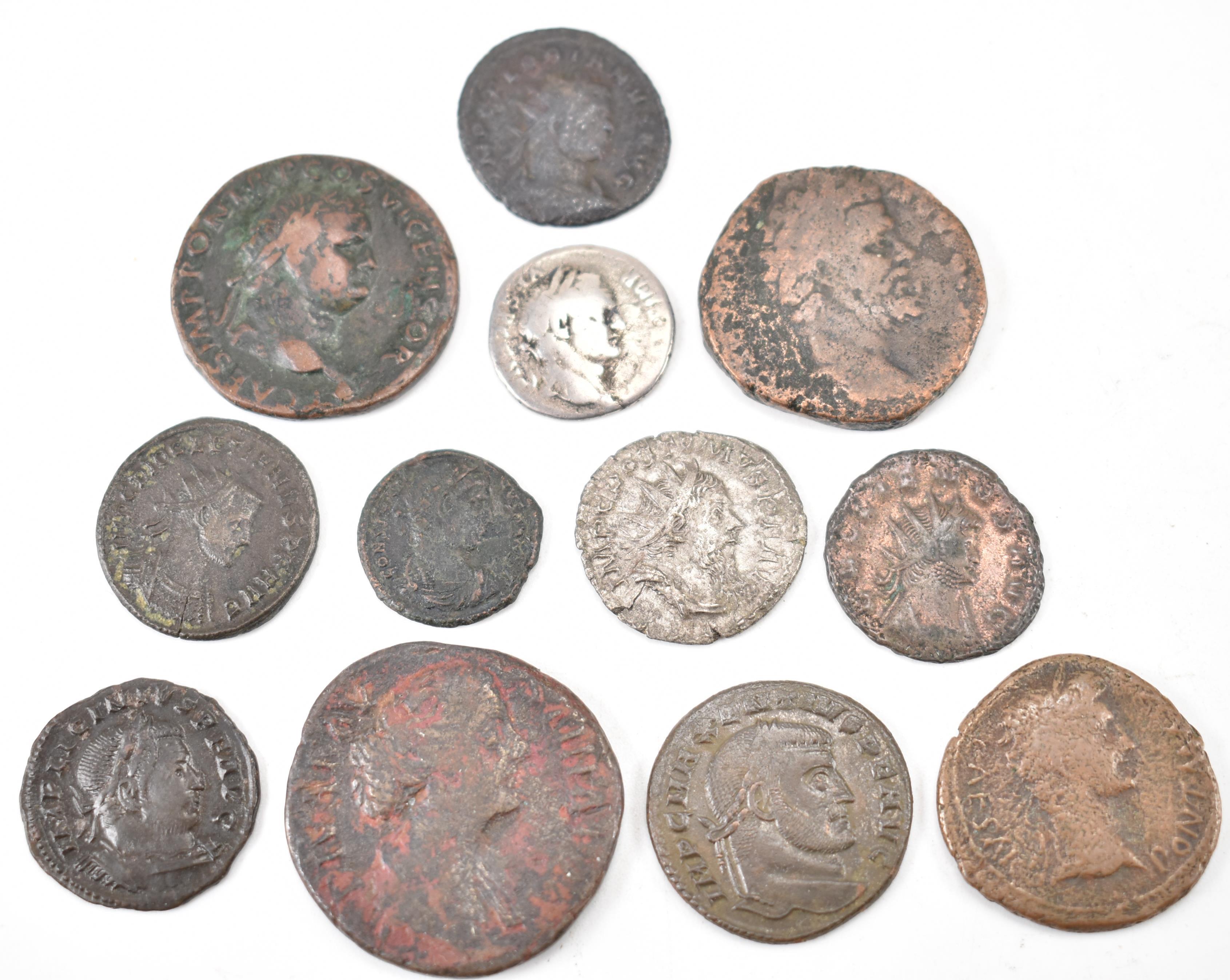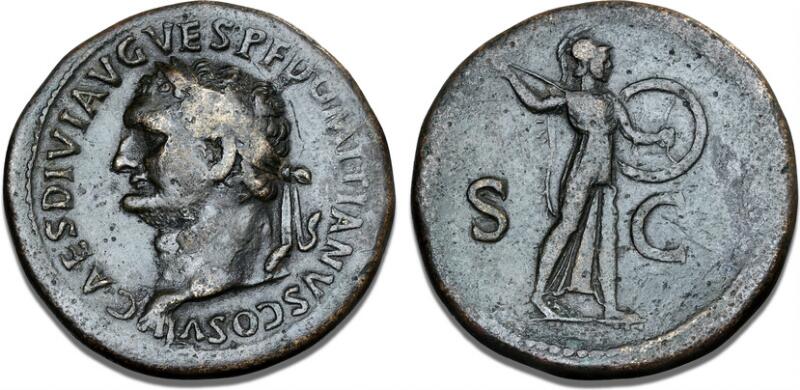Titus Æ Sestertius. Rome, AD 80-81. View of the Flavian Amphitheater (The Colosseum) from the southeast, seen from aerial perspective and containing imperial box; porticus of the Baths of Titus to left, Meta Sudans to right / IMP T CAES VESP AVG P M TR P P P COS VIII, S C across field, Titus seated left on curule chair, left arm across lap, holding branch in outstretched right hand; around, helmets, shields and cuirass. RIC II 184; Elkins Type C, 6i (A4/P6); BMCRE 190; Küthmann & Overbeck 52; Cohen 400; Hendin 1594; Bauten Roms 52. 20.83g, 31mm, 7h. Pleasant glossy light-brown 'Tiber' patina (river patina), Near Very Fine. Extremely Rare, only 22 examples listed by Elkins, and one of the only 7 not in a museum collection. Missing in most major collections. Built of concrete and stone, the great Amphitheatrum Flavium was the largest amphitheatre of the Roman Empire, and is considered one of the greatest works of Roman architecture and engineering. Construction began under Vespasian in AD 72, and was completed in AD 80 under his successor and son Titus, though further modifications were made during the reign of Domitian. It is estimated that the Colosseum could hold between 50,000 and 75,000 spectators, and was the scene of grand gladiatorial contests and public spectacles including mock sea battles, animal hunts, re-enactments of famous battles, and dramas based on Classical mythology. The building ceased to be used for entertainment in the early medieval era and was later reused for such purposes as housing, workshops, quarters for a religious order, a fortress, a quarry, and a Christian shrine. This rare emission of Sestertii depicting the newly-completed Colosseum was a very effective form of propaganda, intended to trumpet the achievements of the Flavian dynasty as well as to serve as a symbol of Rome's strength, proseperity and engineering prowess.
Titus Æ Sestertius. Rome, AD 80-81. View of the Flavian Amphitheater (The Colosseum) from the southeast, seen from aerial perspective and containing imperial box; porticus of the Baths of Titus to left, Meta Sudans to right / IMP T CAES VESP AVG P M TR P P P COS VIII, S C across field, Titus seated left on curule chair, left arm across lap, holding branch in outstretched right hand; around, helmets, shields and cuirass. RIC II 184; Elkins Type C, 6i (A4/P6); BMCRE 190; Küthmann & Overbeck 52; Cohen 400; Hendin 1594; Bauten Roms 52. 20.83g, 31mm, 7h. Pleasant glossy light-brown 'Tiber' patina (river patina), Near Very Fine. Extremely Rare, only 22 examples listed by Elkins, and one of the only 7 not in a museum collection. Missing in most major collections. Built of concrete and stone, the great Amphitheatrum Flavium was the largest amphitheatre of the Roman Empire, and is considered one of the greatest works of Roman architecture and engineering. Construction began under Vespasian in AD 72, and was completed in AD 80 under his successor and son Titus, though further modifications were made during the reign of Domitian. It is estimated that the Colosseum could hold between 50,000 and 75,000 spectators, and was the scene of grand gladiatorial contests and public spectacles including mock sea battles, animal hunts, re-enactments of famous battles, and dramas based on Classical mythology. The building ceased to be used for entertainment in the early medieval era and was later reused for such purposes as housing, workshops, quarters for a religious order, a fortress, a quarry, and a Christian shrine. This rare emission of Sestertii depicting the newly-completed Colosseum was a very effective form of propaganda, intended to trumpet the achievements of the Flavian dynasty as well as to serve as a symbol of Rome's strength, proseperity and engineering prowess.










/188401/Photo3%20data.jpg)


/188390/Photo3%20data.jpg)

Testen Sie LotSearch und seine Premium-Features 7 Tage - ohne Kosten!
Lassen Sie sich automatisch über neue Objekte in kommenden Auktionen benachrichtigen.
Suchauftrag anlegen